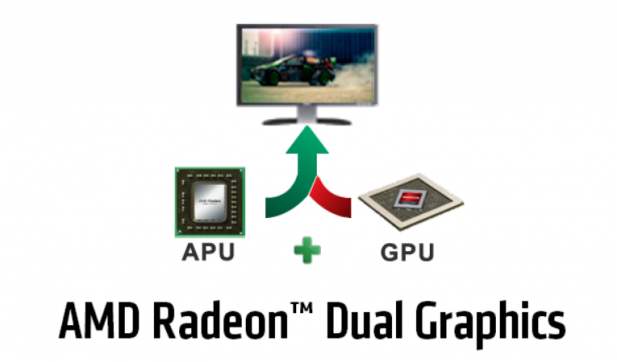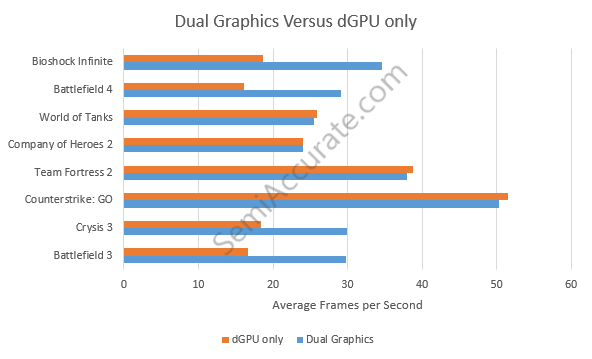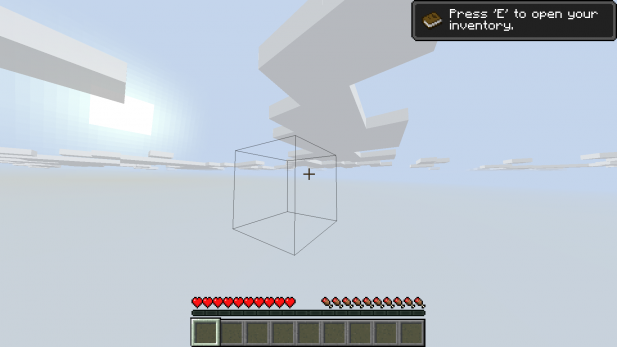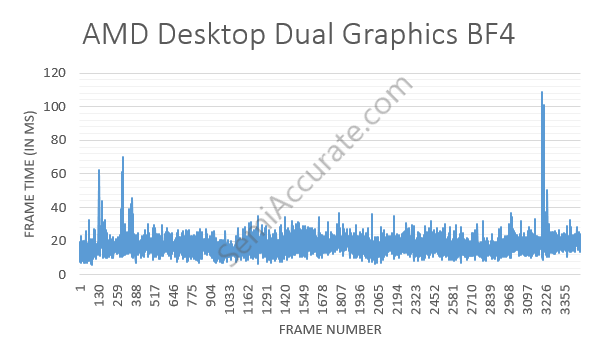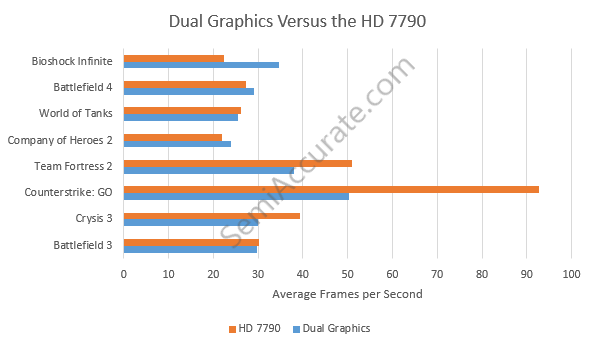 With the launch of the Catalyst 14.1 Beta driver AMD brought frame-pacing to PCs with desktop and mobile Radeon Dual Graphics configurations. For those of you that are unfamiliar with Dual Graphics the concept is rather straight forward. AMD’s APUs offer very similar performance to low-end discrete GPU solutions. What if end users could run their APUs in Crossfire with similarly performing discrete GPUs? Dual Graphics answers this question by allowing users to do just that.
With the launch of the Catalyst 14.1 Beta driver AMD brought frame-pacing to PCs with desktop and mobile Radeon Dual Graphics configurations. For those of you that are unfamiliar with Dual Graphics the concept is rather straight forward. AMD’s APUs offer very similar performance to low-end discrete GPU solutions. What if end users could run their APUs in Crossfire with similarly performing discrete GPUs? Dual Graphics answers this question by allowing users to do just that.
Of course this isn’t the first iteration of Dual Graphics on AMD’s part. The technology was originally introduced with AMD’s first mainstream APU, Llano. Since it’s launch in 2011 Dual Graphics has always fallen into that category of technologies that are interesting and perhaps even compelling in concept, but fail to perform for various reasons. That said for certain users who are constrained either by budget or power considerations adding a low-end dGPU to an APU-based system may make sense. Especially with the addition of frame-pacing to Dual Graphics configurations thanks to AMD’s latest beta driver.
Despite this latest improvement there are still a number of issues with AMD’s Dual Graphics, namely sketchy support for certain AAA titles and the lack of consistent support for titles that don’t use DirectX 10 or 11 for rendering. This means that all OpenGL and most DirectX 9 and below games are not supported by Dual Graphics. Only the dGPU will render those titles. Considering that a large number of popular games, including just about anything from Valve or indie titles like Minecraft don’t use DirectX 10 or 11 the scope of applications for AMD’s Dual Graphics is more limited than the average user might, at first, be led to believe.
With limited support for the current crop of popular gaming titles, relatively high cost of entry, and the ever more competitive $50 to $150 discrete GPU market it’s difficult to see a Dual Graphics configuration as a good solution. More than that though because of the limitations that AMD has placed upon this technology it’s hard to come up with a use case in which it makes more sense to add a cheap dual-slot dGPU like the R7 250 to a desktop or SFF system than it does to add a slightly more expensive, equally sized, and consistently more powerful dGPU like the R7 260(x).
Nonetheless we went ahead and ran our A10-7850K + R7 250 system with DDR2 2400 memory through a few benchmarks to see if Dual Graphics actually boosted performance in our games and to verify that the frame pacing technology that AMD introduced was actually doing its job.
The average performance benefit of Dual Graphics over a single R7 250 was 38 percent. This is a significant advantage, but in half the games we tested there was no performance improvement what-so-ever. Additionally, we also unsuccessfully attempted to test Dual Graphics using Minecraft and Civilizations V. In the case of Civ V the game would only render a black screen if we tried to enable any kind of Anti-aliasing and considering that we were seeing 70+ frames per second on maxed out settings we opted not to not to test that game.
Minecraft on the other hand decide to not render any terrain. We brought this issue to AMD and were told that this is a known issue that is scheduled to be fixed with the 14.2 Beta. AMD’s had a tough time with its drivers lately and it looks like the pain for users isn’t over quite yet. Although, they do seem to be aware of their weakness we still need to see more progress before we’re willing to consider them on par with Nvidia’s drivers again. They’re not awful, but there is obvious room for improvement.
Let’s see if we can verify that frame pacing is at work for Dual Graphics users.
During our testing we noted that AMD’s Dual Graphics actually provides a subjectively smoother experience than the R7 250 can muster in Battlefield 4. Considering how tightly packed the frame times are (~+/-5 ms) it’s clear that AMD frame-pacing is at work in this title.
With all that in mind I’d like to note that we intermittently experienced a few frozen black screens while enabling and disabling Dual Graphics which required us to restart our Windows 8.1 testing system. As far as we’re concerned AMD’s current Dual Graphics implementation on the desktop is immature and provides a lack-luster user experience. Perhaps stability and support for common games will improve with future updates.
Now let’s look at how Dual Graphics stacks up against the HD 7790 which is very similar in performance to current R7 260(x) offerings that only costs between $10 and $30 more than the R7 250 you’d have to purchase to enable Dual Graphics.
As our results demonstrate for just a little more money you can have a single GPU that is in most situations faster, smoother, and can provide consistent performance across graphics rendering APIs. Plus it will also work on OSes other than Windows 7/8.1 unlike Dual Graphics.
AMD’s Dual Graphics has never really worked like users hoped it would and after three generations of the technology it seems that only a complete conversion of video games to DirectX 10 and above rendering engines can really validate the usefulness of this technology. Of course that transition may never fully happen so AMD’s Dual Graphics is stuck in an awkward limbo land where it offers users the least desirable traits of both low-end discrete graphics solutions and multi-GPU configurations.
It’s good to see that AMD is still working on this technology, but its clear this even with frame-pacing and better support for AAA games AMD’s Dual Graphics is still a feature that should not influence your buying decisions.S|A
Thomas Ryan
Latest posts by Thomas Ryan (see all)
- Intel’s Core i7-8700K: A Review - Oct 5, 2017
- Raijintek’s Thetis Window: A Case Review - Sep 28, 2017
- Intel’s Core i9-7980XE: A Review - Sep 25, 2017
- AMD’s Ryzen Pro and Ryzen Threadripper 1900X Come to Market - Aug 31, 2017
- Intel’s Core i9-7900X: A Review - Aug 24, 2017
